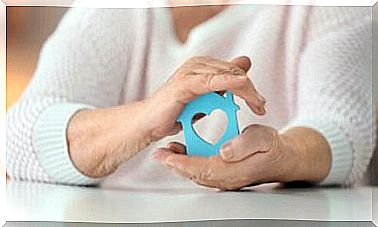How To Trick Your Brain Into Having A Moment Of Happiness

Did you know that you can trick your brain to cause a moment of happiness? Yes, happiness is an emotion / emotional state that we can attract, even in the seemingly less conducive circumstances.
It has been known, for a long time, that emotions are accompanied by numerous changes in the body, such as an increase in heart rate or the flexing of certain muscles of the face that give rise to that gesture that we all like so much: the smile .
What hasn’t been discovered until relatively recently is that this can be a two-way street. Thus, we can trick the brain by causing some of the physical reactions that arise from emotions, so that, from them, we facilitate the appearance of the emotion.
By smiling you can attract a moment of happiness
The expression of emotions is a two-way street. Our brain pays attention to what our body is doing, and this affects our emotions. Thus, the mere fact of smiling, even if there is no reason, provides the body with a moment of happiness that has great benefits.
Although circumstance, initially known as the facial feedback hypothesis, involves more than just the muscles of the face, it brings good news. And it is that, although sometimes it is difficult to control our emotions, it is much easier to control our muscles.
Keep in mind that your smile is a powerful tool. Most people think that we smile because we feel happy, but it can also be the opposite: we feel happy because we smile.

Facial feedback hypothesis
To many it will seem silly that a simple smile can attract an emotion as intense as happiness. However, it will not be such a fool when science has devoted several experiments and studies to investigate the hypothesis of facial feedback.
One of the best experiments to prove this hypothesis was conducted in the late 1980s. The researchers did not want to influence the results by telling subjects that the study was about emotion, so they devised a clever way to get subjects to flex certain muscles of their face without the need for them to know the ultimate purpose of the request.
The participants had to hold a pencil in a certain way. There were three ways. The first group held the pencil wide between their teeth, forcing a smile. The second group held the pencil to their lips, so that they could not smile; in fact, the posture forced them to frown slightly. The control group had the pencil in hand.
Then the subjects looked at some cartoons, and rated how funny they were. The group forced to smile gave the cartoons much “funnier” ratings than the frown group, while the control group gave intermediate ratings.
In a more recent study, subjects who participated in it were presented with a series of faces. These faces had happy, neutral or angry expressions. The subjects were told that the study was trying to measure the reaction time of the facial muscles, but they were really studying emotion. Regardless of the image, subjects had to either “lift their cheeks” (smile) or “tighten their eyebrows” (frown).
The educated facial expression influenced how the images were perceived. When the subjects smiled, they found the images more pleasant than when they frowned. On top of that, the effects of the brief smile persisted 4 minutes later.
Forced smile, real happiness
Facial feedback works because the brain detects the flexion of certain facial muscles (such as the zygomaticus major and zygomaticus minor, which are required to smile) and interprets it as saying there are reasons to be happy about something. Similarly, if that muscle is not flexed, the brain thinks this is not the time to be happy.

But this is not all. In addition to the feedback that we obtain physically on an individual level, there is another issue that influences the emotion of happiness: social feedback. The smile is contagious. In fact, even if you do not feel very happy, if the people around you smile, it is easy for you to do it too and, therefore, improve your mood.
So if you really want to get the most out of facial feedback, find something to laugh at or just lift the corners of your mouth to trick your brain. What is initially a forced smile will quickly turn into a real smile. And from the first moment, your happiness will be real.
Whatever you are up against, that little moment of happiness will make it that much easier.









